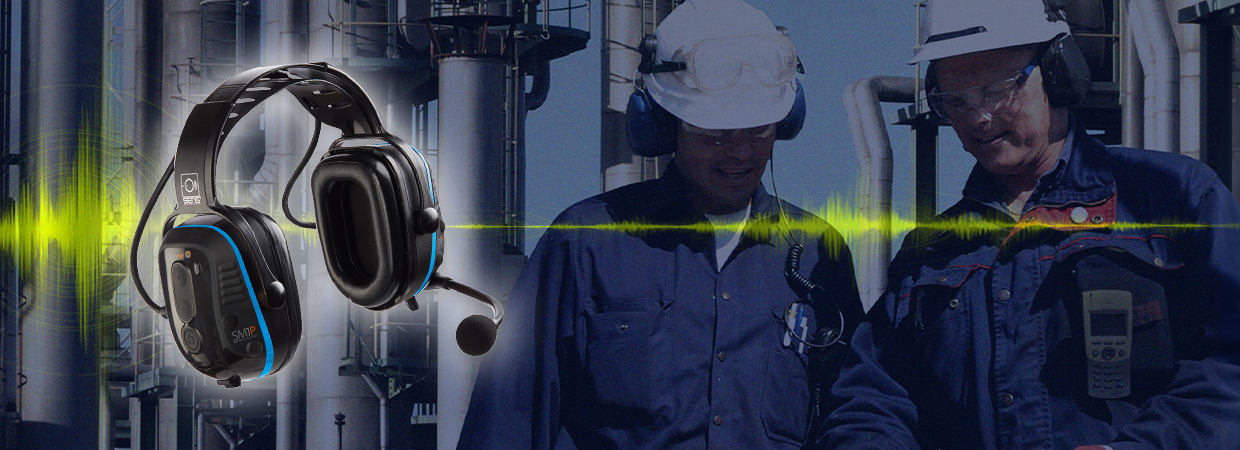- Home
- Blog
- Hazardous Locations / Intrinsic Safety
- Understanding Intrinsically Safe Headset Certifications - Part Two

Understanding Intrinsically Safe Headset Certifications - Part Two
In the previous blog, we explained what an explosive atmosphere was, and why an Intrinsic Safety Certification is required for your communications headset.
In Part Two we will delve into the Classification System itself and explain how to identify which communication headsets are certified as Intrinsically Safe for the environment you are working in.
 Explosive Protection Classification System
Explosive Protection Classification System
Hazardous area classification is used to identify places where, because of the potential for an explosive atmosphere, special precautions over sources of ignition are needed to prevent fires and explosions.
Plants and facilities are typically classified according to:
- The nature of the explosive atmosphere (types of gases that can occur)
- The probability that an explosive atmosphere will be present
Equipment is classified according to:
- The maximum (spark) energy it can produce (Apparatus Group)
- Its maximum surface temperature (Temperature Class)
The properties of the materials and the level of risk are assessed to separate the equipment safety ratings into Hazard Classes, Area Classifications (Zones), Gas Groups, and Temperature Class.
Hazard Classes Define the Type of Hazard in the Area.
Three hazard classes are defined:
Class I: Flammable gases, vapors, or liquids.
Class II: Combustible dusts.
Class III: Ignitable fibers and flyings.
For Class I hazards, area classifications (Zones) define the probability of the presence of the hazard in the area.
| Class | Area Classification | Description |
| I | Zone 0 | A place where explosive atmospheres are continually present. |
| I | Zone 1 | A place in which an explosive atmosphere is likely to occur in normal operation. |
| I | Zone 2 | A place in which an explosive atmosphere is not likely to occur in normal operation, but may occur for short periods. |
Gases and vapors are classified into Gas Groups, defining the flammable
nature of the material.
| Gas Group | Gas |
| IIA | Propane |
| IIB | Ethylene |
| IIC | Acetylene & Hydrogen |
Likewise, equipment is classified into a Temperature Class
This is normally assessed at an ambient temperature of 40ºC. The Temperature Class code identifies a product's maximum surface temperature.
| Temperature Class | Maximum surface Temperature |
| 1 | 450°C |
| 2 | 300°C |
| 3 | 200°C |
| 4 | 135°C |
| 5 | 100°C |
| 6 | 85°C |
How do I know the communications headset that I have chosen is Intrinsically Safe for my work environment?
The design of the communication headset will determine its Intrinsic Safety rating. The headset will then be labeled with the appropriate Hazard Class, Area Classification (Zone), Gas Group, and Temperature Class.
Classification System UL - Product Markings Explanations
(Sensear SM1xSR IS)
- ‘Class I’ designates the products are rated for flammable gases, vapors, or liquids.
- ‘Zone 1’ designates the products are suitable for environments where an explosive atmosphere is likely to occur in normal operation.
- ‘AEx’ designates that the products are approved to US standards.
- ‘ia’ designates the protection method employed as the intrinsic safety method.
- ‘IIB’ designates that the headset is suitable for use where gases from Group IIB and IIA may be present.
- ‘T3’ designates that the headset is suitable for temperature classes T1, T2, and T3.
It is dangerous to make assumptions about the safety of your headset when you are working in explosive atmospheres. It is important to consult an Intrinsic Safety Expert to validate the IS certifications of the products being used in these areas.






